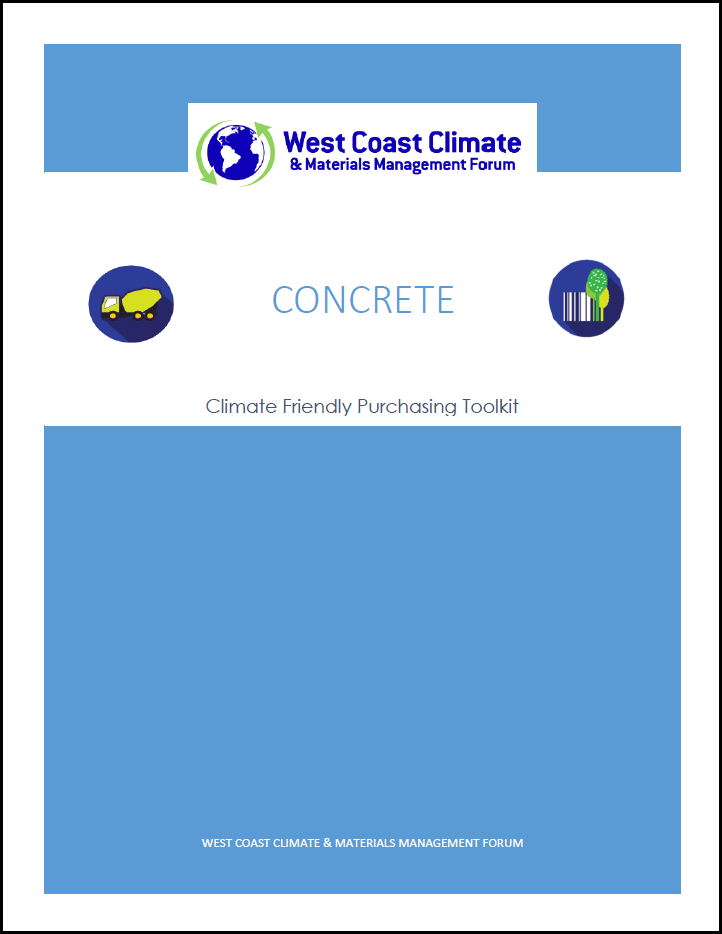This section of the Climate Friendly Purchasing Toolkit provides specific strategies to reduce GHG emissions from the purchase of concrete. The most effective purchasing strategy for reducing the GHG impact of concrete is consuming less concrete. This tool, however, will assume that the public institutional purchaser using this guidance has already reduced their demand for concrete to the greatest extent possible and is now ready to purchase concrete.
A study of 86 different public GHG inventories found that the purchase of concrete can comprise between 10 and 15 percent of all emissions (Good Company Meta Analysis, 2015)
The production of concrete is among the most greenhouse gas intensive building materials, comprising up to 5% of global CO2 emissions. State and local governments have found that purchasing concrete contributes significantly to their GHG inventories. Since concrete is an essential material for both our transportation and building infrastructure, reducing the environmental impacts of concrete is of paramount importance. Fortunately, there are numerous ways to reduce the GHG impact of concrete mixes. Many of the methods which are discussed in this paper are not only well known by the concrete industry, but in some cases, are also cost competitive.
Greenhouse Gas Impacts of Concrete
Sources of Greenhouse Gas (GHG) emissions from concrete production include:
- The processing of limestone into cement which requires significant energy inputs and creates a chemical reaction that emits carbon dioxide.
- Quarrying, hauling, crushing, and screening of aggregates
- Handling, storing, mixing, and method of preparation of materials
Given the high contribution cement has to the carbon footprint of concrete, the most effective means to reduce the GHG emissions from concrete is to simply reduce the cement content of the mix as much as possible.
Opportunities to reduce the GHG impacts of Concrete
There are several materials that can act as partial substitutes to Portland cement, which can lead to GHG and cost reductions. The material substitution measures discussed here include the supplementary cementitious materials (SCM). Learn more here.
Government purchasers have numerous strategies at their disposal for lowering the greenhouse gas impacts of concrete purchases. Overall, the concrete industry is actively developing and testing new supplementary cementitious materials to meet the demand for long lasting, low impact and safe concrete products. The strategies outlined in this module will allow government purchasers to make meaningful reductions in their greenhouse gas impacts of their concrete purchases.

.PNG)
